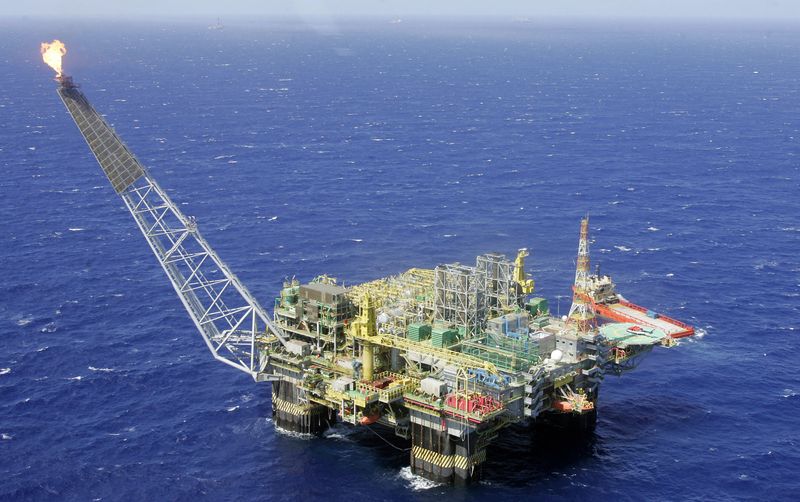Investing
Crude oil stabilizes; set to record a positive week

© Reuters
Investing.com — Oil prices stabilized Friday after the previous session’s sharp gains, and are set to break a two-week losing streak on optimism about crude demand from Chinese refineries as well as a weaker dollar.
By 03:45 ET (07:45 GMT), futures traded 0.1% lower at $70.55 a barrel, while the contract fell 0.1% to $75.61 a barrel.
Both benchmarks soared 3%, the biggest jump in six weeks, on Thursday, putting them on course to register gains of around 1% this week, breaking a two-week losing run.
These gains came after data released Thursday showed that China’s oil refinery throughput in May rose 15.4% from a year earlier, its second highest total on record.
China’s economic recovery from its COVID hit has been stuttering, but these numbers suggest that demand from the country’s refineries for crude remains strong.
Helping the tone was the news that China’s central bank has cut a couple of interest rates this week. This suggests that Beijing is determined to prop up the economy and thus more stimulus is likely to boost activity in the world’s largest importer of crude.
Adding to the week’s optimism has been weakness in the , which fell overnight to a five-week low versus a basket of other currencies on the back of some disappointing U.S. economic data.
The dollar is on track for its biggest weekly drop since January, making oil, which is denominated in dollars, cheaper for holders of other currencies.
That said, the crude market is still down over 10% since the start of the year, despite swinging cuts to output levels from a group of top producers, given persistent concerns over the global demand outlook, and with the strength of the U.S. economy, in particular.
The U.S. paused its year-long rate-hiking cycle on Wednesday, as widely expected, but signaled the likelihood of two more rate increases this year.
This has raised fears that the U.S. economy, the largest consumer of oil in the world, will fall into recession in the second half of the year.
Additionally, the raised interest rates for the eighth successive time on Thursday and signaled further policy tightening ahead, while the is likely to hike next week as it battles the highest level of inflation in the G7.
Higher interest rates ultimately increase borrowing costs for consumers, which could slow economic growth and reduce oil demand.
Numbers from detailing the total of active oil rigs in the U.S. and positioning data from round off the week later in the session.
Read the full article here

-

 Passive Income7 days ago
Passive Income7 days agoJoin the Highest-Growing Industry in 2025 With This $60 Cybersecurity E-Learning Bundle
-

 Side Hustles5 days ago
Side Hustles5 days agoAI Agents Are Becoming More Humanlike — and OpenAI Is Launching a New One in January. Are Entrepreneurs Ready to Embrace the Future?
-

 Passive Income5 days ago
Passive Income5 days agoSending A Last-Minute Marketing Email? Follow This 7-Step Checklist to Avoid Making These Costly Mistakes
-

 Investing4 days ago
Investing4 days agoCheck it Out: An AI Multi-Tool for Any Budget
-

 Investing4 days ago
Investing4 days agoMaersk asks customers to remove cargo before potential strike at US ports By Reuters
-

 Investing7 days ago
Investing7 days agoMorgan Stanley boosts consumer finance outlook for 2025 By Investing.com
-

 Side Hustles7 days ago
Side Hustles7 days agoLooking to Sell Your Company? Here’s a Potentially Lucrative Exit Plan Every Business Needs to Consider.
-

 Investing6 days ago
Investing6 days agoLifetime Digital Asset Management Made Simple for Businesses


















